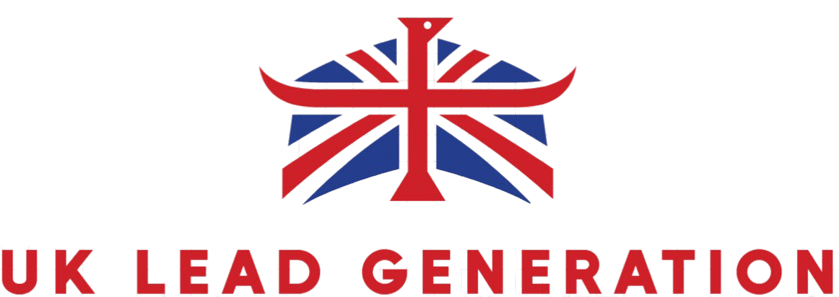5 Strategies for Effective Community Management
Let's Set Up Your Lead Generation Strategy
Fill out the form below, and our team will get in touch with you to create a tailored solution for your business.
In today’s interconnected world, effective community management is essential for fostering engagement and building lasting relationships, particularly through social media channels.
Whether online or offline, communities flourish when their members feel valued and connected.
This article delves into five key strategies that can elevate your community management efforts and enhance your brand community. Each step plays a vital role in nurturing an active and inclusive space, from clearly defining your community strategy and its goals to crafting a welcoming environment.
Discover how to build an active online community that resonates with its members and evolves alongside their needs.
Contents
- Key Takeaways:
- 1. Define Your Community and Its Goals
- 2. Establish Guidelines and Expectations
- Let's Set Up Your Lead Generation Strategy
- 3. Encourage Active Participation
- 4. Foster a Positive and Inclusive Environment
- 5. Continuously Evaluate and Adapt Your Strategies
- What Is Community Management and Why Is It Important?
- Let's Set Up Your Lead Generation Strategy
- How Can a Community Manager Encourage Engagement and Participation?
- What Are Some Strategies for Creating a Positive and Inclusive Community?
- Let's Set Up Your Lead Generation Strategy
- Why Is It Important to Continuously Evaluate and Adapt Community Management Strategies?
- Frequently Asked Questions
- What are the 5 strategies for effective community management that enhance community health?
- How does building relationships contribute to effective community management?
- Why is establishing clear communication channels important in community management?
- What role does providing valuable content play in effective community management?
- How does creating a welcoming environment benefit community management?
- Why is ongoing engagement important in community management?
Key Takeaways:

- Clearly define your community and its goals to ensure everyone is working towards the same expectations.
- Setting community guidelines and expectations helps establish a positive and respectful culture within the community.
- Actively encourage participation through various means, such as hosting events and engaging with members on social media.
1. Define Your Community and Its Goals
Defining your community and its goals is crucial for effective community management. It sets the stage for a vibrant brand community that enhances customer engagement and amplifies brand awareness throughout the customer journey, guiding your marketing strategies.
A well-articulated community strategy clarifies the purpose and expectations for members, enriching their experience and aligning efforts toward achieving key objectives, ultimately supporting community growth.
To accomplish this, dedicate time to identify the specific needs and preferences of your members. Utilize community feedback to tailor valuable resources by employing surveys, forums, or one-on-one interviews to gather insights.
For example, you might uncover that your audience prioritizes support and education over promotional content. This insight will guide the types of interactions and resources you create.
Establishing clear, measurable goals like boosting member participation by 25% within six months helps assess success and maintain accountability, especially in customer retention strategies.
Implementing effective strategies, such as launching a mentorship program or hosting regular community events, demonstrates how aligning goals with your brand values fosters a more engaged audience and cultivates a stronger, more authentic community experience.
2. Establish Guidelines and Expectations
Establishing clear community guidelines and expectations is crucial for maintaining the health of your community, especially during crises. It ensures that every member understands the norms and values that govern interactions and behaviors, enhancing brand loyalty.
These guidelines should highlight acceptable behaviors, encouraging respect, kindness, and constructive dialogue among community members. Engaging tactics, such as acknowledging valuable contributions and fostering inclusive conversations, can be employed through feedback loops.
Make sure you have clear steps for handling conflicts this keeps everyone feeling secure and valued within the community, enhancing relationships.
Setting these expectations not only aids in conflict resolution but also cultivates a culture of mutual respect and collaboration, ultimately strengthening brand engagement.
Let's Set Up Your Lead Generation Strategy
Fill out the form below, and our team will get in touch with you to create a tailored solution for your business.
3. Encourage Active Participation
Encouraging your community members to participate actively is essential for creating lively interactions. This not only boosts content created by community members but also strengthens brand loyalty.
Engage members through techniques like hosting live events, friendly challenges, or sparking discussions on social media. For instance, a themed contest can showcase creativity, promoting excitement and participation.
Regular discussions on trending topics allow members to share their unique perspectives. This fosters a deeper emotional connection.
Successful communities find that such initiatives create deeper bonds, turning casual participants into dedicated advocates who contribute to community growth.
4. Foster a Positive and Inclusive Environment

Creating a positive and inclusive environment helps build strong relationships in your community. It deepens emotional connections among members, enriching interactions within your brand community.
By recognizing and celebrating diverse backgrounds and perspectives, you foster a sense of belonging that encourages participation and collaboration. Promoting kindness through intentional acts, like peer recognition programs, can transform simple interactions into lasting connections.
Addressing negativity head-on establishes clear values and expectations for behavior, fostering a culture of respect and enhancing community interactions.
Case studies illustrate this transformation, such as a local neighborhood group that introduced weekly kindness challenges. These initiatives resulted in heightened engagement and a marked reduction in conflicts, enriching the atmosphere.
Such strategies pave the way for sustained growth and a positive impact on overall community retention.
5. Continuously Evaluate and Adapt Your Strategies
Continuously evaluating and adapting your community management strategies is essential for ensuring the longevity and well-being of your community. This approach allows you to integrate valuable feedback, enhancing methods that help keep customers coming back.
Utilizing methods like surveys or focus groups provides direct channels for members to voice their opinions and needs. Listening and analyzing this feedback enables you to make informed decisions that align with what your community truly desires.
Demonstrating responsiveness fosters trust and encourages ongoing participation. This creates an environment where members feel valued and heard.
This adaptability nurtures individual relationships while significantly contributing to the overall growth and sustainability of your community, making it a powerful business tool.
What Is Community Management and Why Is It Important?
Community management involves thoughtful processes and strategies to build, maintain, and grow your brand community. This is particularly vital through social customer care, which supports customers on social media platforms. It plays a crucial role in enhancing customer engagement and ensuring effective social customer care, especially during crisis management.
Let's Set Up Your Lead Generation Strategy
Fill out the form below, and our team will get in touch with you to create a tailored solution for your business.
By fostering open lines of communication and creating a welcome atmosphere, you can significantly influence brand loyalty and encourage customer retention. When individuals feel valued and heard, their connection to your brand deepens, leading to increased advocacy and repeat business.
Effective community management not only addresses immediate concerns but also anticipates customer needs. This allows you to enhance your offerings proactively through customer insights. This relationship changes how customers and brands interact, turning them into partners where customers contribute ideas, share experiences, and feel like essential stakeholders in your brand’s journey.
How Can a Community Manager Effectively Define Their Community?
A community manager can define their community by immersing themselves in the needs and preferences of its members. Aligning this understanding with broader community goals helps cultivate a vibrant brand community.
One of the best ways to gather insights is through surveys. These provide community members an opportunity to voice their thoughts, creating a robust customer feedback loop. By crafting thoughtful questions that invite honest feedback, you can uncover what genuinely matters to your community members.
Analyzing engagement metrics which measure how actively your community interacts will give you a clearer understanding of member behavior. Revealing patterns can guide the community’s future direction and marketing campaigns.
For instance, if data indicates that community members are most active during specific events, you can tailor future initiatives to enhance participation and satisfaction. This ultimately shapes a strategy that resonates with the community’s core essence.
What Are the Key Elements of Creating Community Guidelines?

Ready to build a thriving community? Start by outlining essential guidelines! Creating effective community guidelines requires you to set expectations, govern engagement tactics, and ensure the overall health of the community, especially during crisis management scenarios.
To achieve this, define acceptable behavior that fosters mutual respect among community members and cultivates a positive atmosphere. Incorporating clear strategies for conflict resolution enables individuals to navigate disagreements constructively, reducing tensions before they escalate.
Specifying the consequences for breaches of these guidelines is crucial for maintaining accountability. Every member must understand the importance of compliance. Ultimately, the clarity and accessibility of these guidelines are paramount, allowing each individual to grasp their roles and responsibilities. This enhances collective harmony and fosters community building.
How Can a Community Manager Encourage Engagement and Participation?
As a community manager, you have the power to inspire engagement and participation by implementing targeted strategies that resonate with your community members. By leveraging various social media channels, you can gather invaluable customer insights that inform your approach.
Consider incorporating game-like elements such as points, badges, and leaderboards. These features elevate interaction levels, transforming participation into a rewarding and enjoyable experience. A prime example is Duolingo s language learning app, which uses a gamified approach to motivate users to meet daily goals and compete with friends.
Incorporating interactive content like polls, quizzes, and live Q&A sessions can spark discussions and foster a sense of belonging. Take a page from Spotify s annual ‘Wrapped’ feature, which engages users with personalized insights and encourages them to share their experiences on social media, significantly boosting community interaction.
What Are Some Strategies for Creating a Positive and Inclusive Community?
Strategies for cultivating a positive and inclusive community revolve around building strong relationships and nurturing emotional connections among members, promoting brand engagement through shared values and experiences.
Acknowledge individual achievements and celebrate the diverse backgrounds of community members to create a welcoming atmosphere. For example, spotlight employees from varied cultural backgrounds in monthly newsletters, showcasing their contributions and unique perspectives. This fosters a sense of belonging and encourages others to share their own stories.
Let's Set Up Your Lead Generation Strategy
Fill out the form below, and our team will get in touch with you to create a tailored solution for your business.
Brands like Nike have mastered building inclusive communities through campaigns that celebrate diversity in sports. Their initiatives resonate deeply with consumers and demonstrate a genuine commitment to inclusivity, underscoring the vital role of recognition and engagement within the community.
Why Is It Important to Continuously Evaluate and Adapt Community Management Strategies?
Continuously evaluating and adapting your community management strategies is crucial for maintaining the health of your community, enhancing customer retention, and responding to the ever-evolving needs of your members through a well-established feedback loop.
Actively seek input from your community to tailor your approach and better align with their desires and pain points, which refer to challenges faced by community members. For instance, a well-known consumer electronics company launched a feedback initiative encouraging users to share thoughts on product features. This commitment to listening led to significant adjustments in future releases, boosting customer satisfaction and loyalty.
A popular clothing brand has mastered utilizing social media polls to identify trends and customer preferences, enabling them to pivot their marketing strategies with agility. Such adaptive tactics highlight the impact that regular assessments and community engagement can have in building successful, sustainable brands.
Frequently Asked Questions

What are the 5 strategies for effective community management that enhance community health?
The 5 strategies for effective community management are: building relationships, establishing clear communication channels, providing valuable content, fostering a sense of belonging, and continuously engaging with members.
How does building relationships contribute to effective community management?
Building relationships is crucial for effective community management because it creates a sense of trust and support. It encourages members to actively participate and contribute to the community.
Why is establishing clear communication channels important in community management?
Clear communication channels ensure that important information and updates are effectively shared with community members. This keeps everyone on the same page and minimizes confusion or misunderstandings.
What role does providing valuable content play in effective community management?
Providing valuable content keeps community members engaged. It helps establish the community as a trusted resource, encouraging ongoing participation.
How does creating a welcoming environment benefit community management?
Creating a welcoming environment strengthens bonds among members. This boosts participation and creates an exciting atmosphere for everyone involved.
Why is ongoing engagement important in community management?
Staying active in your community is key to its success! Regular interaction with members keeps the community lively and thriving.






